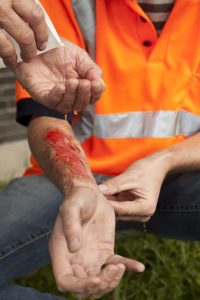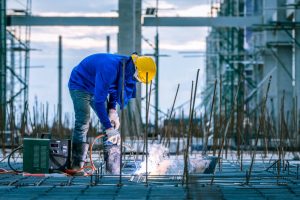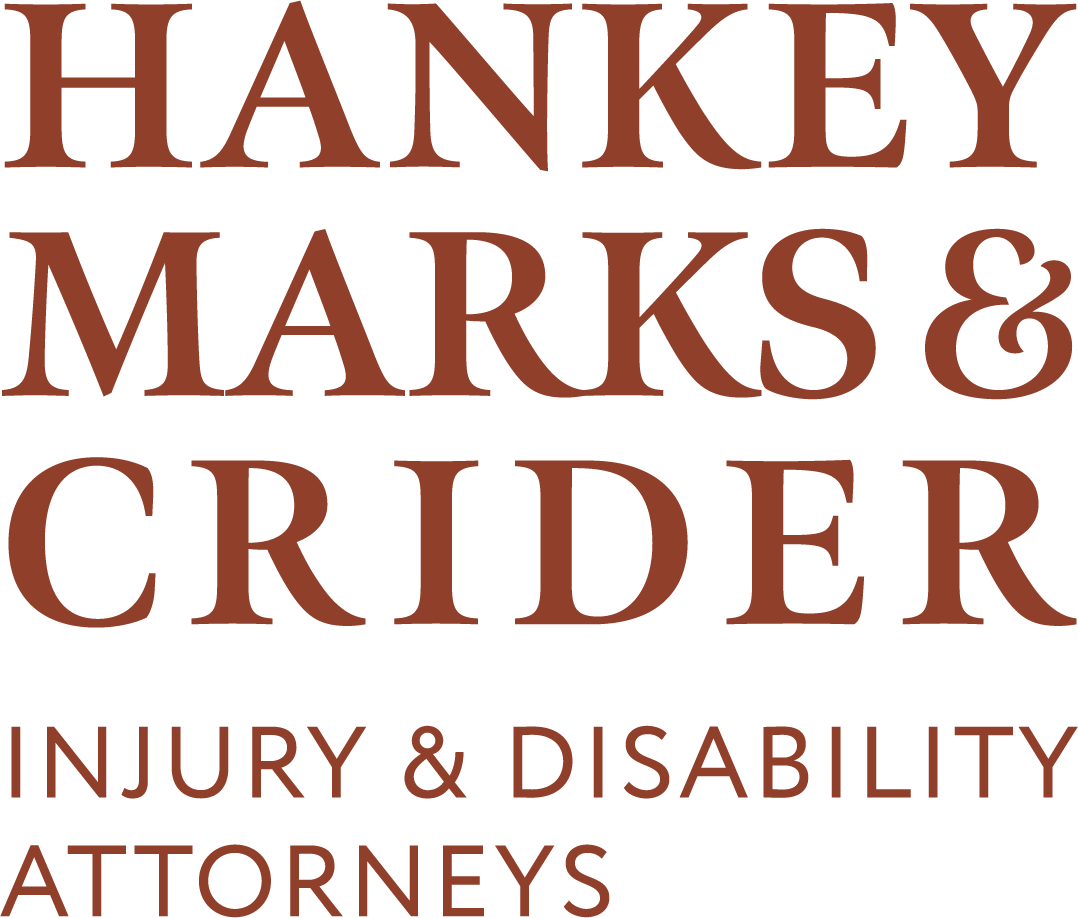Indianapolis Lawyers for Construction Site Burn Injuries
If you suffered a burn injury during a construction site accident, you might be overwhelmed by the paperwork, workers’ compensation claim or third party insurance claim, and recovering from the accident-related injury. Burn injuries are painful and can take a long time to heal.
Minor burns may require minimal treatment, but you must take care that they do not get infected. An infected minor or major burn can result in the same way – in sepsis and possibly death. Burns can have a long-lasting effect on the victim and their family.
Major burns may require months of hospitalization and lead to disability and permanent disfigurement. If you or someone you love has suffered a burn from a construction site accident, you deserve compensation, either from the workers’ compensation carrier, if you were injured on the job, or from the liable party if you were a visitor or independent contractor on the work site.

Call the Indianapolis burn injury attorneys of Hankey Marks & Crider today at (317) 634-8565 for your free consultation and case evaluation.
You will speak with one of our legal professionals, who will hear the details of your case and answer your questions. If we decide to work together, our law firm works on a contingency basis. This means we do not charge you any fees unless we recover damages or get a favorable verdict in court for you.
Common Types of Burns on a Construction Site
There are several different types of burns. However, these are the ones that commonly occur on construction sites:
Electrical: When electricity contacts the body, it can damage the skin or internal tissues and organs. An electrical burn can be mild or severe and can even lead to death. An electrical burn is not only present on the surface of the skin, but internal organs and tissues can also be burned.
During contact with electricity, it is not uncommon for the heart rhythm to become disrupted. It can also cause the heart to suddenly stop beating, which is called cardiac arrest. This is because the heart muscle is driven by electrical impulses your body produces. When an external electrical source disrupts those electrical impulses the heart is producing, it can cause the heart to stop.
Contact with electricity can cause a person to pass out or disrupt electrical impulses to the muscles, causing muscle weakness. If the muscle is severely injured by an electrical impulse, it can cause the fluid from the damaged muscle to seep into the blood. This is called rhabdomyolysis and can trigger severe injury to other organs, including the kidneys.
External burns may take on the appearance of a thermal burn. The extent and severity of the burn will be determined by the type, voltage, and amperage of the current.
Chemical: Chemical burns can happen when the skin contacts a chemical or the fumes of a chemical. Some of the construction site products that are linked to chemical burns include cleaners, car battery acid, concrete mix, and paint thinner. Many other products contain chemicals that can also cause a burn.
Chemical burns can occur on the skin, but when the fumes are inhaled, they can burn your mouth and trachea. The severity and symptoms of the burn will depend on how long the chemical was in contact with the skin, whether they were open cuts during contact, the strength of the chemical, and whether the chemical was in gas, liquid, or solid form.
If an individual has inhaled chemical fumes, symptoms of an internal burn can include an irregular heartbeat or cardiac arrest, shortness of breath, coughing, dizziness, and seizures.
Thermal: These burns are the most common type of burn. They are due to an external heat source, such as hot metal or flames. The heat increases the temperature of the skin cells, which causes tissue death and charring.
Thermal burns can be minor and treated at home or can lead to hospitalization in a specialized burn center. The decision to treat at a burn center is based on the severity of the burn, how much of the body’s surface has been impacted, and the individual’s medical history.
Approximately 30,000 people will require admission to a burn center each year, and 450,000 people will be treated for burns annually. Of those, 86 percent are thermal burns. A severe thermal burn is categorized as one that covers greater than 20 percent of the body’s surface area.
This can also trigger a systemic response that may be more dangerous than the burn itself. A systemic response is triggered by proteins that are released from the damaged cells into the bloodstream. This starts a cascade of events that damages the cardiovascular system and kidneys. It can lead to a drop in blood pressure, a lack of oxygen to the organs, and bronchoconstriction with severe breathing difficulties.
Scald: Scalding burns are like thermal burns, only they are caused by something wet, such as hot water or steam. A scalding burn can also trigger a systemic response when it affects 20 percent or more of the skin’s surface. In every other respect, a scalding burn will appear nearly identical to a thermal burn.

How Burns Are Classified and Treated
Your healthcare provider will classify a burn as one of three types based on the severity of the burn. This is determined by the depth and appearance of the skin. It is important to remember that this classification is for external burns that you can see on your skin and does not include burns to the internal organs or lungs from electrical or chemical burns.
First-degree burns: These are the least severe. They appear more like sunburn. The top layer of your skin may be red and painful, but you will not see a blister, and there will be no other changes to the area.
Second-degree burn: In this instance, the top and lower layers of the skin are damaged. The area will be painful and red, with swelling and fluid-filled blisters. These blisters protect the underlying skin and should never be popped, which would increase your risk of infection.
Third-degree burns: These burns affect all three layers of skin and often into the fatty tissue beneath. Because third-degree burns damage your nerve endings, there is generally no pain during the initial days after a third-degree burn. The skin can look black, white, or red. The area around the burn can be very painful, and the burn area will become painful as the nerve endings begin to grow back.
How an Experienced Construction Site Accident Attorney Can Help
Even minor burns can lead to disfigurement, and more severe burns can also cause physical disability. After a construction site accident in which you were burned, if you were an employee, you should advise your employer, seek treatment, and hire an attorney to help with your workers’ compensation claim.
If you were not an employee at the time you were injured on the job site, you’ll file a claim with the at-fault party’s insurance company. The insurance company may send an adjuster to speak with you about the accident and ask you questions.
It is crucial that you do not answer questions unless you have your attorney present. The insurance adjuster’s job is to gather evidence to disprove your claim that the burn occurred on the construction site or that it was not your fault. An experienced construction accident attorney can help protect your right to fair compensation.
The attorneys at Hankey Marks & Crider are aware of the strategies that insurance companies use to reduce your benefits or deny your claim. Our team is not afraid to fight the big guys. In fact, it’s what we do best.
Contact an Experienced Indianapolis Construction Site Accident Attorney
The attorneys at Hankey Marks & Crider will work closely with you to evaluate the details of your case and give you an honest answer to all your questions. We walk our clients through every step of the legal process while keeping our clients’ goal of maximum compensation our focus.
Our skilled burn injury attorneys will negotiate with the insurance adjusters and insurance company lawyers for a fair settlement. If these negotiations are not successful, we can pursue a case in court to fight for the compensation you are owed after a burn accident on a construction site.
Contact our office today at (317) 634-8565 for a free consultation and case evaluation with one of our experienced Indianapolis burn injury attorneys.


